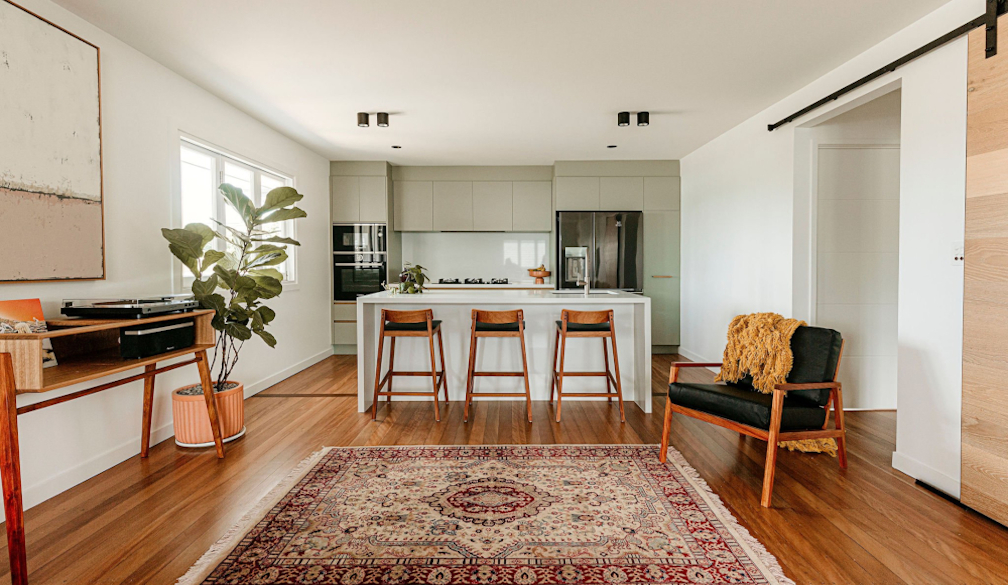A Beginner's Guide to Mid-Century Modern Furniture

Step into the Timeless Elegance of Mid-Century Modern Design
Mid-Century Modern (MCM) furniture is more than just a style; it's a design movement that has left an indelible mark on the world of interior design. Characterised by clean lines, organic forms, and a blend of functionality with sleek aesthetics, MCM furniture continues to captivate enthusiasts with its timeless appeal.
Unveiling the Essence of Mid-Century Modern Design
Emerging in the mid-20th century, particularly between the 1930s and 1960s, Mid-Century Modern design is rooted in the post-World War II era. It reflects the pursuit of a new, optimistic approach to life, combining innovation, practicality, and a departure from the ornate styles of the past.
A Shift in Design Paradigm:
The mid-20th century marked a pivotal period in history, especially in the aftermath of World War II. As the world emerged from the shadows of war, a wave of optimism and a desire for change swept through society. This transformation wasn't just about rebuilding physically but also about reimagining lifestyles, values, and design sensibilities.
Post-War Optimism and Innovation:
Mid-Century Modern design encapsulated this zeitgeist of optimism, embracing the belief in progress and a better future. Designers sought to create furniture and spaces that echoed this newfound hope. They strayed from the heaviness and intricacies of pre-war design styles, embracing simplicity, functionality, and a sense of airiness.
Fusion of Form and Function:
A key aspect of Mid-Century Modern design was its emphasis on the harmony between form and function. Designers focused on creating furniture that was not just visually appealing but also practical and efficient. This philosophy gave rise to iconic pieces that embodied elegance without sacrificing usability.
Influences and Inspirations:
Mid-Century Modern design drew inspiration from various sources. Scandinavian design principles heavily influenced MCM, emphasising clean lines, minimalism, and a connection to nature. Innovations in materials and manufacturing techniques, such as moulded plywood and new synthetic materials, fueled creativity and experimentation among designers.
Cultural Impact and Enduring Legacy:
The impact of Mid-Century Modern design extended far beyond furniture. It influenced architecture, interior design, and even popular culture. Its sleek, futuristic aesthetic became synonymous with modernity, and its popularity endured through the decades, experiencing resurgences in various design movements.
A Timeless Legacy:
Mid-Century Modern design continues to captivate audiences today, not just for its historical significance but also for its timeless appeal. Its clean lines, organic forms, and focus on functionality remain highly sought after, influencing contemporary design trends and captivating new generations with its enduring elegance.
In essence, the essence of Mid-Century Modern design lies in its ability to encapsulate the spirit of an era, reflecting the aspirations, innovations, and optimism that characterised the post-World War II period while leaving an indelible mark on the world of design.
Key Features and Design Principles:
MCM furniture boasts distinct characteristics:
- Clean Lines: Straight lines and gentle curves define MCM pieces, creating a sense of simplicity and elegance.
- Organic Forms: Inspired by nature, MCM designers incorporated organic shapes, often seen in chair backs, tables, and other furnishings.
- Functionality: Form followed function in MCM design; furniture was crafted to be both aesthetically pleasing and practical for everyday use.
- Use of Materials: Woods like teak, walnut, and rosewood were popular choices, alongside materials like moulded plastics and metals like steel and aluminium.
- Minimal Ornamentation: MCM pieces typically featured minimal ornamentation, focusing instead on the inherent beauty of the design itself.
Iconic Pieces and Their Significance
Eames Lounge Chair and Ottoman: Designed by Charles and Ray Eames, this iconic piece epitomises comfort and sophistication, blending leather upholstery with moulded plywood.
Noguchi Coffee Table: Isamu Noguchi's creation, with its organic glass top resting on two curved wooden pieces, showcases the perfect harmony between art and furniture.
Egg Chair: Arne Jacobsen's creation, with its sculptural shape and enveloping form, redefined the concept of a comfortable chair.
Saarinen Tulip Table: Eero Saarinen's design, featuring a sleek pedestal base and a rounded top, symbolises elegance and innovation in table design.
Significance in Interior Design Today
Mid-Century Modern furniture remains highly sought after and relevant in contemporary interior design. Its clean lines and timeless aesthetic make it versatile, allowing it to seamlessly integrate into various design styles.
From minimalist interiors to eclectic spaces, MCM pieces add a touch of sophistication and a nod to design history. Moreover, their enduring popularity has inspired modern-day furniture designers, influencing current trends and shaping the future of interior decor.
Embrace Timeless Elegance
Mid-Century Modern furniture continues to stand the test of time, captivating admirers with its blend of form, function, and enduring style. Whether you're a seasoned collector or a newcomer to the world of design, exploring MCM furniture opens the door to a world of elegance and innovation that transcends generations.

















